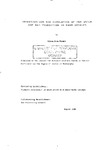INVESTIGATION AND SIMULATION OF HOT WATER USE AND PRODUCTION IN FARM DAIRIES
| dc.contributor.author | NORMAN, ALICE JANE | |
| dc.contributor.other | Faculty of Science and Engineering | en_US |
| dc.date.accessioned | 2013-10-03T09:43:54Z | |
| dc.date.available | 2013-10-03T09:43:54Z | |
| dc.date.issued | 1988 | |
| dc.identifier | NOT AVAILABLE | en_US |
| dc.identifier.uri | http://hdl.handle.net/10026.1/1985 | |
| dc.description.abstract |
The dairy farming sector of European Agriculture is currently under considerable economic pressure so the aim of each farmer should be to produce saleable milk, at the lowest cost. One important area of concern is the expenditure on hot water for hygiene, as to be acceptable to the buyer the milk must have a low level of contaminants. Clean milk is produced from clean, healthy udders by means of equipment which is adequately and appropriately cleaned. To facilitate this hygienic milk production most dairies are eguipped with heaters to provide water at 40°C (for cleaning udders) and 80- 100°C (for plant cleaning). The practice of udder washing is a subjective process as it depends on the operator's judgement of a 'clean' udder and his view of necessity. In England and Wales there are two only accepted methods of plant cleaning, circulation cleaning and Acidified Boiling Water (A. B. W.). Prior to the. audit described it was expected that water and electricity consumption for plant cleaning would be predictable. To date there has been little information on the volume and temperature of water used on commercial dairy farms and the electricty consumed to produce this hot water. It is therefore difficult for farmers to make informed judgement on methods of reducing their electricity costs. Thirteen farms in South Devon have been monitored, to establish current practice: farmers were questioned about their water use; electricity and water consumption were metered for two years; and cleaning practices were observed. This survey has revealed that many non-standard cleaning methods are used on dairy farms, making the prediction of water and electricity consumption difficult. The management of equipment has been revealed as the most important aspect in determining the energy used. A computer model has been produced to simulate water heating in the farm dairy, which can be used to advise farmers as to the energy cost of their cleaning practices. This model has .been successfully used on several of the farms surveyed, on one farm its use resulted in energy savings in excess of 400 kWh per month. | en_US |
| dc.description.sponsorship | The Electricity Council | en_US |
| dc.language.iso | en | en_US |
| dc.publisher | University of Plymouth | en_US |
| dc.title | INVESTIGATION AND SIMULATION OF HOT WATER USE AND PRODUCTION IN FARM DAIRIES | en_US |
| dc.type | Thesis | |
| plymouth.version | Full version | en_US |
| dc.identifier.doi | http://dx.doi.org/10.24382/4966 |
Files in this item
This item appears in the following Collection(s)
-
01 Research Theses Main Collection
Research Theses Main


